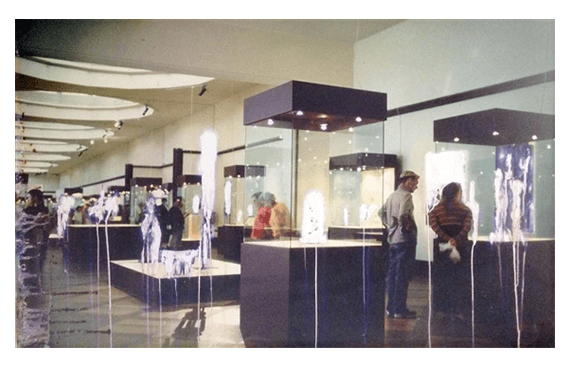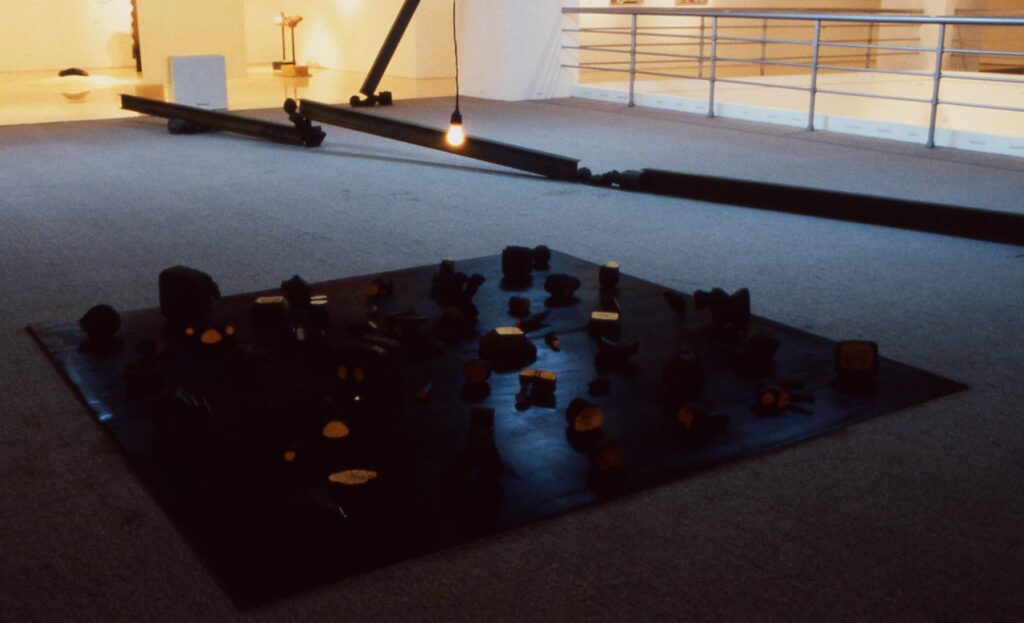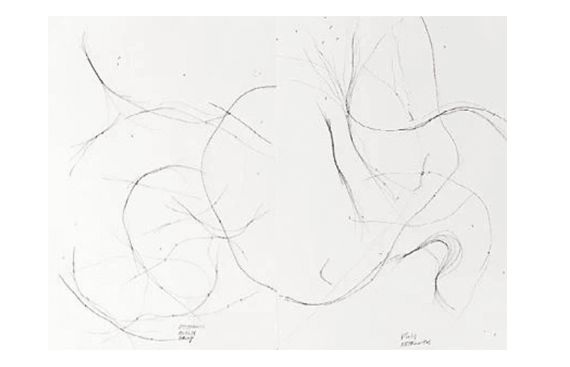
Gaston Damag
Born in Banaue in 1964, Asian Modern and Contemporary artist Gaston Damag has been living in France for the past 30 or so years. Hailing from the mountainous region of the Ifugao province, Damag’s artistic style is reminiscent of the area’s rustic ambiance. His artistic prowess started at a young age when, as a teenager, he carved wooden idols known as bulul. He would sell these to tourists as these “rice guardians” were regarded as excellent souvenirs. As time progressed, he eventually found his way to France and continued to create more of his works of art. Most of which are seen in exhibits across the world, from France, the United States of America and the Philippines.
Heavily influenced by the Cordillera regions’ cultural expressions, Damag’s artistic approach is an amalgamation of his own heritage (being an Ifugao), his own background in ethnology and anthropology, and academic training in the fine arts in Europe. Using steel, glass, wool and oil paintings as elements of his works, Damag’s mastery of his craft is certainly considered world-class. That said, he’s also participated in many art fairs such as France’s Internationale d’Art Contemporain (FIAC), Art Bazel in Switzerland and Art Bazel in Hong Kong.
Biography
ARTIST’S ORIGINS
Born in 1964 in the Cordilleras Region, Gaston Damag’s artistic prowess started at a young age. As a teenager, he sold bulul wood carvings to tourists as souvenirs. Eventually, after graduating from the University of the Philippines with a Fine Arts degree in 1985, he honed his studiesat the École Nationale d’Art de Cergy – Pontoise and Ecole Nationale Supérieure des Beaux-arts de Paris, France.
HIS ART
Being exposed to World Heritage sites like the Banaue Rice Terraces and bulul, Damag’s artistic style is greatly influenced by his roots to the mountain province. His dedication to his art has granted him international acclaim, winning the multimédia/sculpture competition in 1995 at the Ecole des Beaux-arts de Paris and many more. He’s also exhibited in many other countries like in Greece’s Thessaloniki Biennale, Luxembourg’s Dexia Banque Internationale, New York City’s Topaz Arts Center and Sete’s Miam Museum.
Gaston Damag is a Filipino Asian Modern & Contemporary artist based in France. Hailing from the Cordilleras Region, his modern contemporary art-style can be attributed to the melding of his time in Paris and his Ifugao roots. Using wood, glass, metals and oil paintings as mediums for his works, Damag mixes his learned western influence with his cultural upbringing, making his art world-class.
Highlights

Monument (Series), 2006

Portrait, 2007

Camille Lambert

Exploding Idols Series, 2009

Exploding Idols, 2010

1996 Metropolitan Museum of Manila
Recent Exhibits

La Ligne Rouge: Chapter IV
MAIA MULLER GALLERY PARIS | FRANCE JUN 12,2020 – JUL 23,2020
COMING SOON…

Seconde Ligne
MAIA MULLER GALLERY PARIS | FRANCE DEC 08,2017 – JAN 28,2018
COMING SOON…

Gaston Damag: Love Me Tender
MAIA MULLER GALLERY PARIS | FRANCE SEP 05,2019 – OCT 05,2019
COMING SOON…

Angel Velasco Shaw. The Inverted Telescope
THE DRAWING ROOM, MAKATI MAKATI | PHILIPPINES MAY 27,2017 – JUN 20,2017
The Inverted Telescope exhibition is inspired by what I interpret to be transnationalist experiences of people—Filipino artists, in this context, who left their homelands to either study, visit, or live in western countries and were inspired and/or influenced by these cultures, art practices, and mindsets. The phrase is coined by the late Benedict Anderson in his introduction of The Spectre of Comparisons:Nationalism, Southeast Asia, and The World. This exhibition is dedicated to his spirit.

Gaston Damag: Ifugao Red
THE DRAWING ROOM, MAKATI MAKATI | PHILIPPINES
OCT 04,2014 – NOV 15,2014
COMING SOON…

Gaston Damag: Homage to the Culture of Rice
THE DRAWING ROOM, MAKATI MAKATI | PHILIPPINES
OCT 23,2013 – NOV 24,2013
In looking at Gaston Damag’s works we fall prey to exoticizing the symbols that occur regularly at the center of his works, dwelling on the context of his lineage of Ifugao. Coming from the material culture of his tribe, the bulul and the knives peculiar to Ifugao farmers and shamans are, after all, far removed from the everyday lived experience in cities outside the Cordillera region in the Northern Philippines.

Powers That Be
THE DRAWING ROOM, MAKATI MAKATI | PHILIPPINES
JAN 10,2014 – FEB 16,2014
COMING SOON…